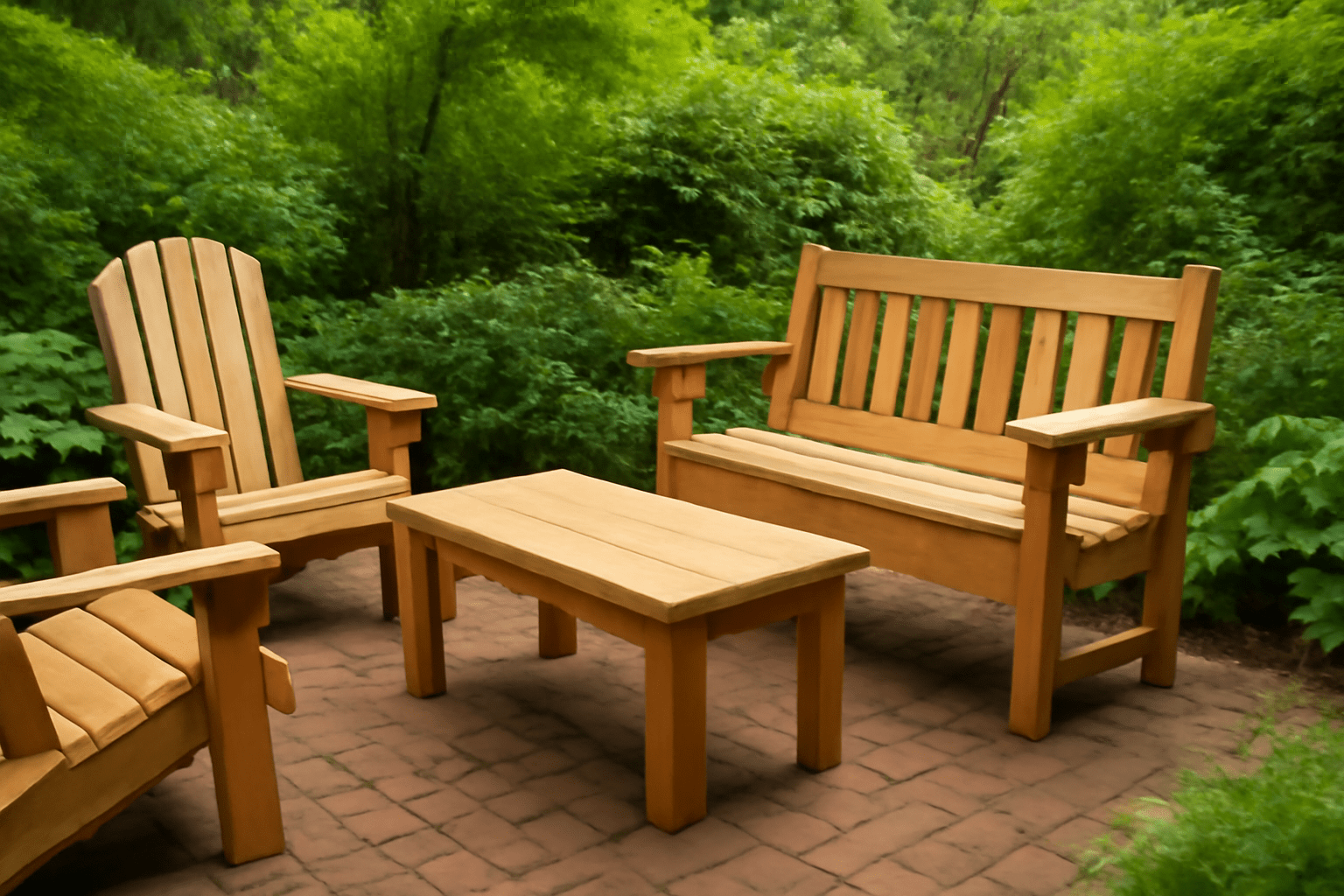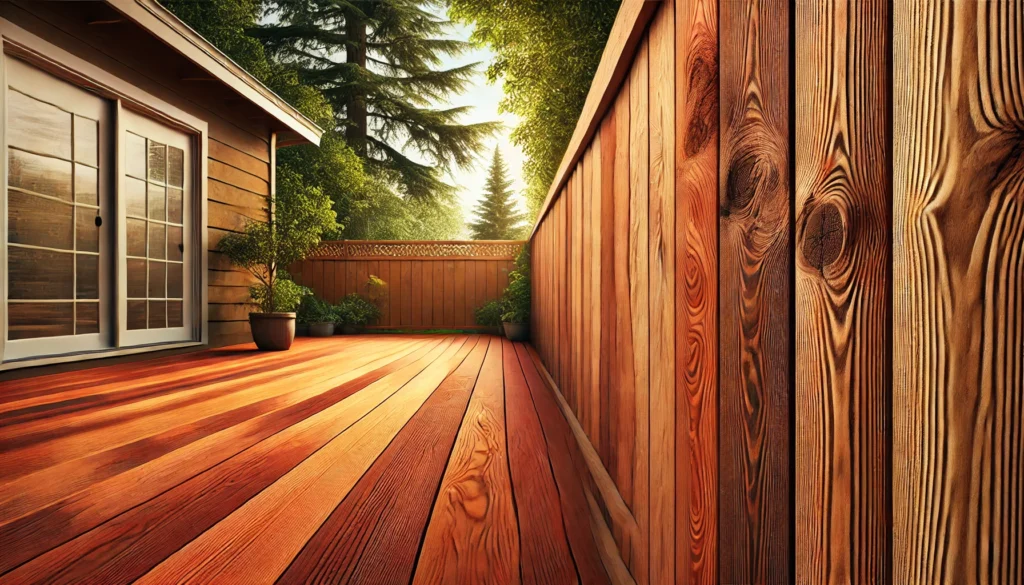
Redwood vs Cedar: Which is Better for Your Next Project?
When it comes to choosing the right wood for your next project, the decision between redwood vs cedar can be a tough one. Both are durable, attractive, and highly sought after for outdoor applications like decking, furniture, and fences. But how do you know which one is truly the best fit for your needs?
In this article, we’ll break down the key differences between redwood and cedar, comparing their strengths, weaknesses, and ideal uses. Whether you’re looking for longevity, aesthetic appeal, or budget-friendly options, we’ll provide you with all the insights you need to make an informed choice. Ready to discover which wood reigns supreme for your next project? Let’s dive in!
Table of Contents
ToggleWhat is Redwood? 
Redwood is a type of tree found mainly along the west coast of the United States, known for its towering height and beautiful reddish-brown wood. 
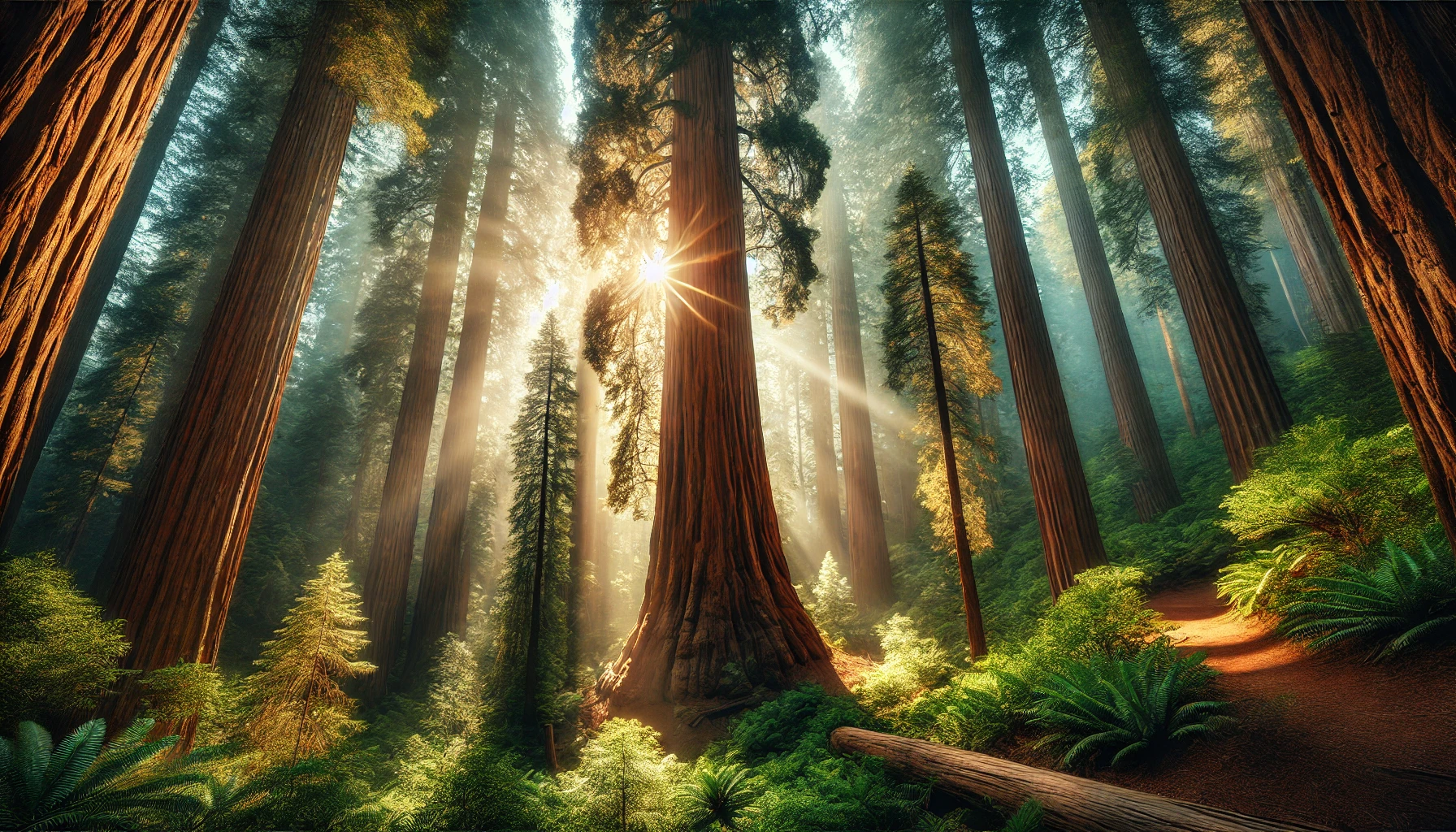
What sets redwood apart is its unique ability to resist decay and insects without the need for chemical treatments. This makes it an excellent choice for decks, fences, and garden furniture that will stand the test of time. The natural oils in the wood act as a protective barrier, keeping it safe from rot and pests like termites.
Why Choose Redwood? 
- Longevity: Redwood can last for decades, especially when used outdoors. Whether you’re building a fence or a deck, redwood’s resistance to decay means you won’t need to worry about replacing it anytime soon.
- Beauty: The rich, warm color of redwood adds elegance and a natural touch to any project. Over time, it develops a charming weathered patina, which many homeowners find even more attractive than its original hue.
- Sustainability: Redwood is a renewable resource, and many redwood forests are sustainably managed, meaning you’re choosing an eco-friendly option for your projects.
- Low Maintenance: While redwood requires some upkeep, it’s far less demanding than other wood types. With periodic cleaning and sealing, your redwood investment will look great for years to come.
Redwood might be just what you need for your next project—whether you want long-lasting beauty or a sustainable, low-maintenance solution.
Now that you know what redwood is, let’s dive into how it compares to cedar to help you make the best choice for your needs.
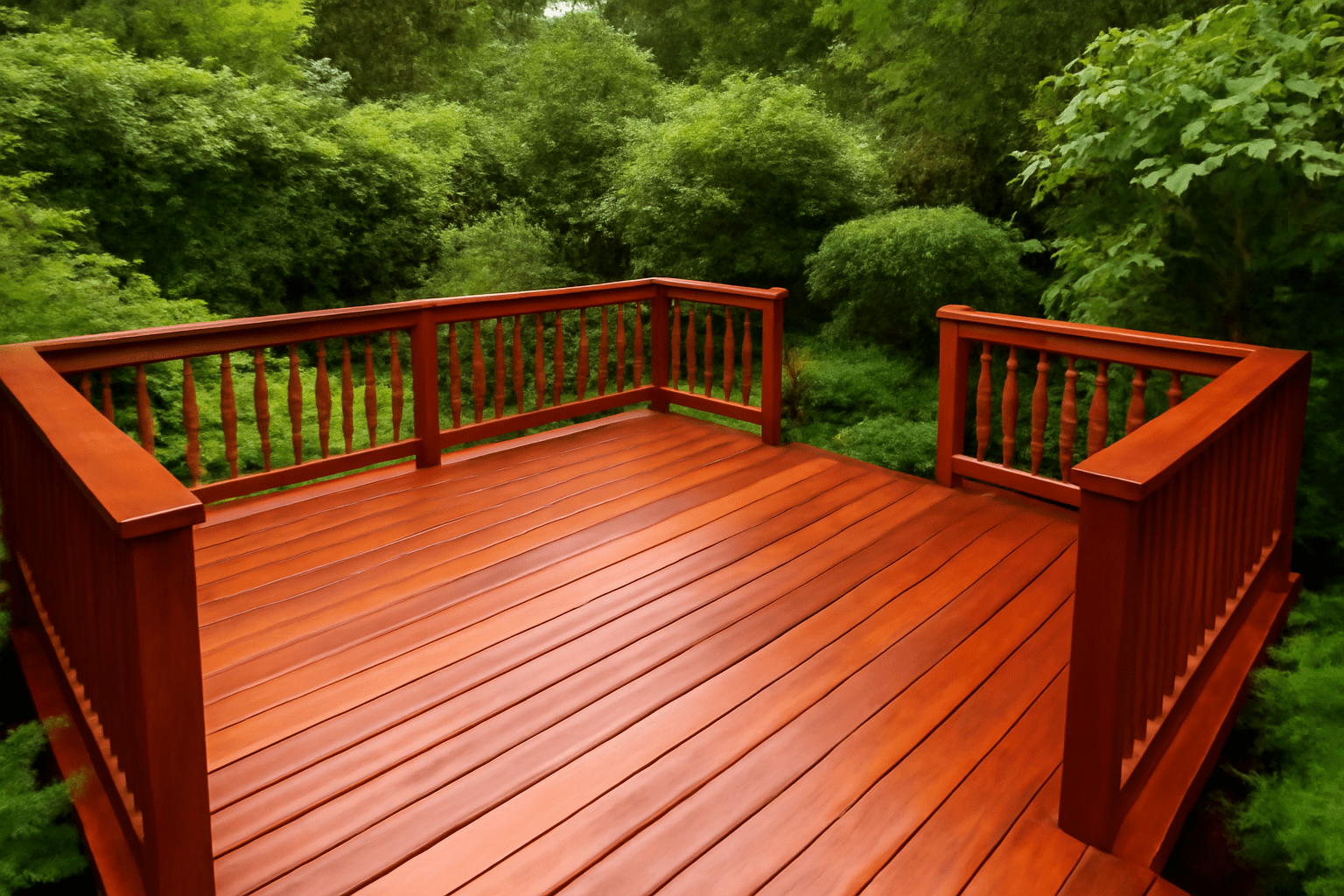
What is Cedar? 
Cedar is a popular softwood that’s widely known for its beauty, durability, and natural resistance to decay. It’s commonly used in a variety of outdoor and indoor applications, such as decking, siding, and furniture. But what makes cedar stand out in the world of wood? Let’s dive in!
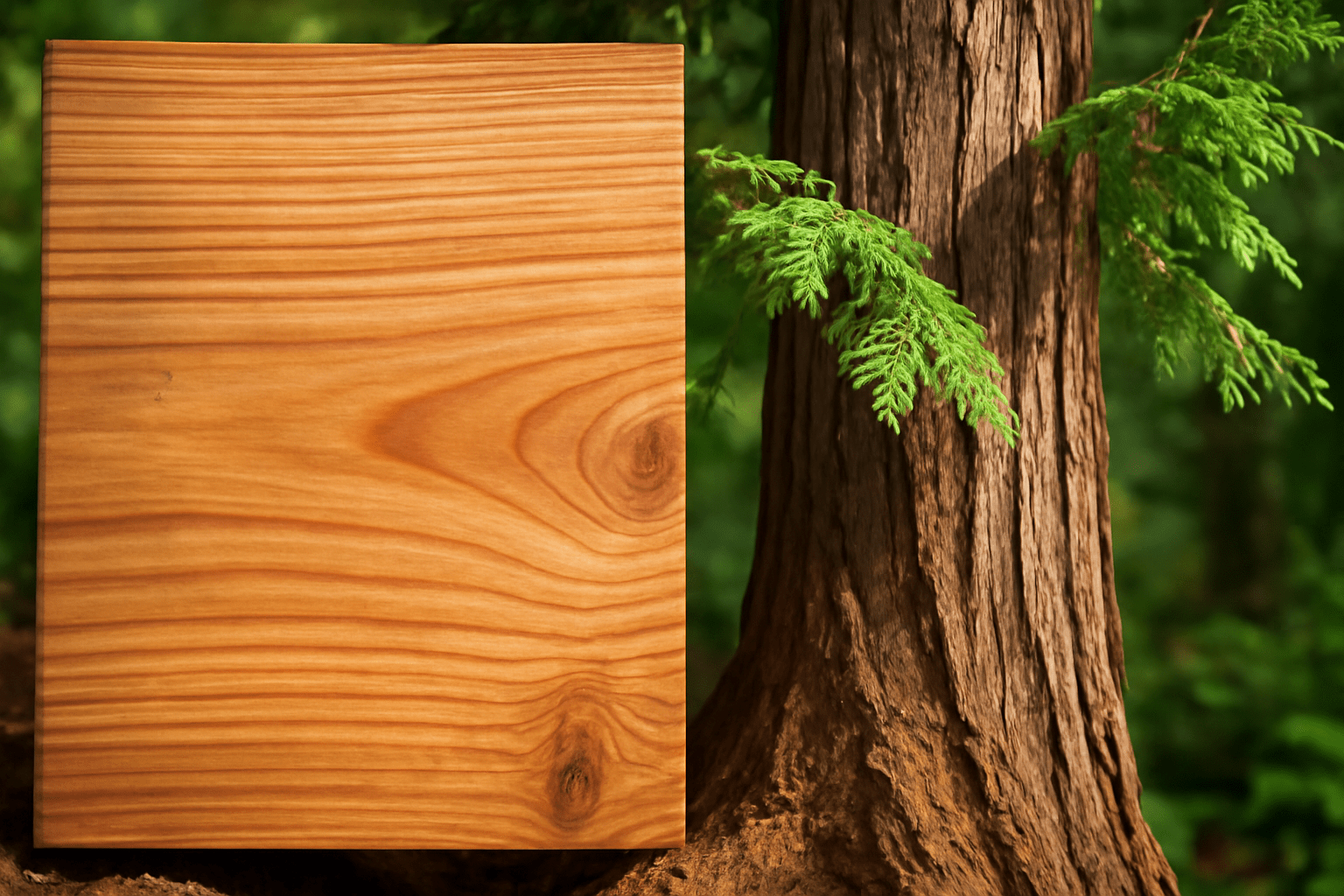
Key Features of Cedar:
- Natural Resistance to Decay: Cedar wood contains natural oils that protect it from moisture, insects, and decay. This makes it an excellent choice for outdoor projects like fencing, decking, and garden furniture.
- Aromatically Pleasant: Cedar has a distinctive, fresh aroma that’s often associated with wellness and freshness. It’s also known to help repel moths and insects, which makes it a popular choice for closet linings and storage.
- Lightweight and Easy to Work With: Cedar is a light wood, making it easy to cut, shape, and sand for DIY projects. It’s also relatively low-maintenance once installed, especially if you’re after a natural weathered look.
- Visually Attractive: Cedar has a rich, reddish-brown hue with subtle grain patterns, making it visually appealing for both modern and rustic designs. Over time, it weathers to a lovely silvery-gray patina, adding charm to outdoor spaces.
Best Uses for Cedar:
- Outdoor Furniture: Its resistance to the elements makes cedar a top choice for patio chairs, tables, and benches.
- Siding and Decking: Cedar’s durability and beautiful appearance are perfect for homes and cabins that need to withstand the weather while looking elegant.
- Interior Projects: Cedar wood is often used in closets, pantries, and storage boxes due to its pleasant scent and natural moth-repelling qualities.
Pros of Cedar:
- Durability: With its natural oils, cedar resists rot and decay, making it ideal for outdoor use.
- Easy Maintenance: Cedar doesn’t require frequent treatments or staining to maintain its appearance.
- Aesthetically Pleasing: Its deep color and attractive grain make it a standout in any space.
Potential Drawbacks:
- Softness: Cedar is softer than hardwoods like oak or maple, meaning it can be more susceptible to dents and scratches.
- Cost: Cedar can be on the pricier side compared to other softwoods, though it’s often worth the investment for its long-lasting quality.
Whether you’re building a deck, crafting furniture, or looking for a charming wood for an interior project, cedar offers a beautiful and durable solution.
Key Differences Between Redwood and Cedar 
When choosing between redwood and cedar for your next project, it’s important to understand how these two popular woods differ in terms of durability, appearance, and usability. Both have their strengths, but they shine in different ways depending on your needs.
1. Durability & Resistance to the Elements 
- Redwood: Known for its exceptional resistance to rot, decay, and insects. This makes it a great choice for outdoor projects like decking, fences, and garden furniture. If you live in a region with heavy rain or humidity, redwood will hold up beautifully for many years without extensive maintenance.
- Cedar: Cedar also has a natural resistance to moisture and insects but isn’t quite as durable as redwood in harsh outdoor conditions. While it’s still a solid choice for exterior projects, it may need more care and maintenance over time, especially in areas with extreme weather.

2. Appearance & Color Palette 
- Redwood: Has a rich, reddish-brown color with variations ranging from pinkish tones to deep, dark hues. This warm, inviting appearance makes it popular for aesthetic-focused projects, such as patios or feature walls. It also ages to a stylish silvery-gray if left untreated.
- Cedar: Known for its lighter, golden-brown hues with subtle pink or purple undertones. Cedar tends to have a more rustic or natural look, which can be perfect for traditional or country-style projects. Like redwood, it weathers to a silvery-gray over time, though its aging process is generally a bit more uniform.
3. Cost & Budget 
- Redwood: Generally more expensive than cedar. This is due to its higher durability, limited availability, and the fact that it tends to be harvested from older, larger trees. If you’re working on a larger project and budget is a concern, this could be a factor to consider.
- Cedar: More budget-friendly compared to redwood. It’s an excellent option if you want a beautiful wood that doesn’t break the bank. It offers great value for smaller projects or if you’re on a tighter budget.
4. Maintenance & Care 
- Redwood: Requires minimal maintenance thanks to its natural oils, which help it resist moisture and decay. However, it may benefit from occasional cleaning and oiling to keep its rich color intact. If you prefer a low-maintenance material, redwood is a strong contender.
- Cedar: While cedar is also relatively low-maintenance, it does require more attention over time to maintain its appearance. Cedar may need to be sealed or stained to protect it from the elements and prevent fading or damage.
5. Sustainability & Environmental Impact 
- Redwood: Due to the high demand for redwood, there are concerns about over-harvesting. Make sure to choose certified sustainable redwood from well-managed forests to reduce environmental impact.
- Cedar: Cedar is generally more sustainable than redwood, as it is more abundant and grows faster. Look for cedar from sustainable sources to ensure it’s environmentally friendly.
Conclusion 
Choosing between redwood and cedar ultimately depends on your project’s needs and budget. If you’re looking for durability and don’t mind spending a little more, redwood is the way to go. On the other hand, if you’re after a beautiful, budget-friendly option that still delivers on performance, cedar is a solid choice.
Both woods offer timeless beauty and functionality, so you can’t go wrong with either. Just be sure to consider factors like cost, durability, and maintenance when making your final decision!
Performance in Specific Applications: Redwood vs Cedar 
When choosing between redwood and cedar, it’s essential to consider how each wood type performs in various applications. Both are popular choices for outdoor projects, but they have distinct strengths depending on what you’re working on. Let’s dive into how each wood fares in some common uses!
1. Decking and Outdoor Furniture 
Redwood excels in outdoor settings due to its natural resistance to weather, decay, and insects. It’s perfect for decking, patios, and furniture, especially in regions with heavy moisture or humidity. The wood’s rich color and unique grain patterns also add a touch of elegance to outdoor spaces.
Cedar, while still durable, is more suited to lighter-duty outdoor projects. It’s great for garden furniture, privacy screens, and fencing. Cedar has excellent natural oils that help resist moisture and pests but may not hold up as well as redwood in extreme conditions.

2. Fencing 
For fencing, both woods are strong contenders. However, redwood tends to be the better option for long-term durability and strength. It withstands the test of time, even when exposed to harsh elements, making it ideal for larger, more exposed areas.
Cedar, on the other hand, offers a more affordable solution for smaller or decorative fences. It still holds up well but might require some maintenance over time, especially in wetter climates.
3. Siding and Cladding 
When it comes to siding, redwood is often the top choice. Its fine texture and rich color provide a luxurious look to any home. It’s naturally resistant to rot and insects, making it a long-lasting option for cladding.
Cedar also works well for siding, especially in warmer climates. It’s lightweight and easy to handle, but it does require periodic treatment to maintain its resistance to moisture and pests.
4. Landscaping 
If you’re planning to use wood for landscaping projects like raised garden beds, planters, or walkways, cedar is a fantastic choice! Its natural resistance to insects and rot helps it perform well in damp soil without the need for much upkeep.
Redwood can also be used in landscaping, especially for larger, more visible structures like garden trellises or arbors. Its beauty and resilience make it an excellent option for aesthetic-focused landscaping.
5. Saunas and Hot Tubs 
For projects like saunas and hot tubs, cedar is the preferred option. It’s known for its pleasant aroma and ability to withstand heat and humidity. The wood’s low density helps it handle the high temperatures without warping or cracking.
While redwood can also be used in these applications, it’s generally not as common due to its higher cost and denser composition.
Key Takeaways 
- Redwood shines in high-end outdoor projects like decking, siding, and fences where longevity and beauty are priorities.
- Cedar is excellent for lighter outdoor furniture, landscaping, and saunas, providing durability at a more affordable price.
- Both woods offer natural resistance to moisture and insects, but redwood’s longer lifespan makes it ideal for heavy-duty projects.
Choosing the right wood depends on your specific needs. If you want long-lasting durability and can invest a bit more, go for redwood. For budget-friendly options with a natural charm, cedar is your best bet!
Which is Better for Your Project? 
When deciding between redwood and cedar for your next project, it all comes down to your specific needs, budget, and the environment where the wood will be used. Both woods are popular choices for outdoor projects, but they offer distinct advantages and disadvantages.

1. Durability and Longevity 
- Redwood is known for its exceptional natural resistance to decay and insects. This makes it ideal for projects exposed to the elements, such as fences, decks, and garden furniture. It can last up to 25 years with proper maintenance.
- Cedar also has great natural resistance to decay and insects but tends to be a bit less durable than redwood in extreme conditions. Cedar is still a solid choice for outdoor applications, with a lifespan of around 15-20 years.
2. Cost Considerations 
- Redwood is generally more expensive than cedar due to its limited availability and higher demand. If you’re working on a tight budget, cedar may be the more practical choice, offering solid performance at a lower price.
- Cedar tends to be more affordable and is widely available, making it a go-to choice for homeowners looking to save money while still getting good quality.
3. Appearance and Aesthetic 
- Redwood features a beautiful reddish-brown color that deepens over time, giving your project a rich, elegant look. It’s perfect for enhancing the beauty of your landscape or outdoor space.
- Cedar has a lighter, more yellowish hue that ages to a silver-gray patina. If you prefer a more natural, weathered look, cedar might be your top pick.
4. Maintenance Needs 
- Redwood generally requires less maintenance than cedar, especially in terms of staining or sealing. It naturally resists moisture and pests, so it’s more low-maintenance over time.
- Cedar needs a bit more attention, as it’s prone to splitting and cracking in certain climates. Regular sealing and care will help maintain its appearance and longevity.
5. Environmental Impact 
- Redwood is sourced from trees that are typically grown in specific areas, leading to more concerns about overharvesting. Make sure to check for sustainably sourced redwood if this is important to you.
- Cedar is a more eco-friendly choice, as it grows in abundance and is often sourced from certified sustainable forests.
Final Thoughts 
- Choose redwood if you need long-lasting, high-quality wood that requires minimal maintenance and offers a richer look.
- Go for cedar if you’re on a budget, want a more natural look, and are willing to invest a little more time in care and maintenance.
In the end, both types of wood have their strengths, so the right choice depends on your priorities. Whether you’re building a deck, a fence, or outdoor furniture, both redwood and cedar can bring durability and beauty to your project.
Conclusion
Choosing between redwood vs cedar ultimately depends on your specific project needs, budget, and personal preferences. Both woods offer remarkable qualities, but they excel in different areas. Redwood is the top choice for those seeking long-lasting durability, superior strength, and rich aesthetic appeal, especially for high-end outdoor projects like decking and fencing. On the other hand, cedar offers a more affordable alternative with a light, aromatic appeal, perfect for smaller projects or those looking for a natural, rustic charm.
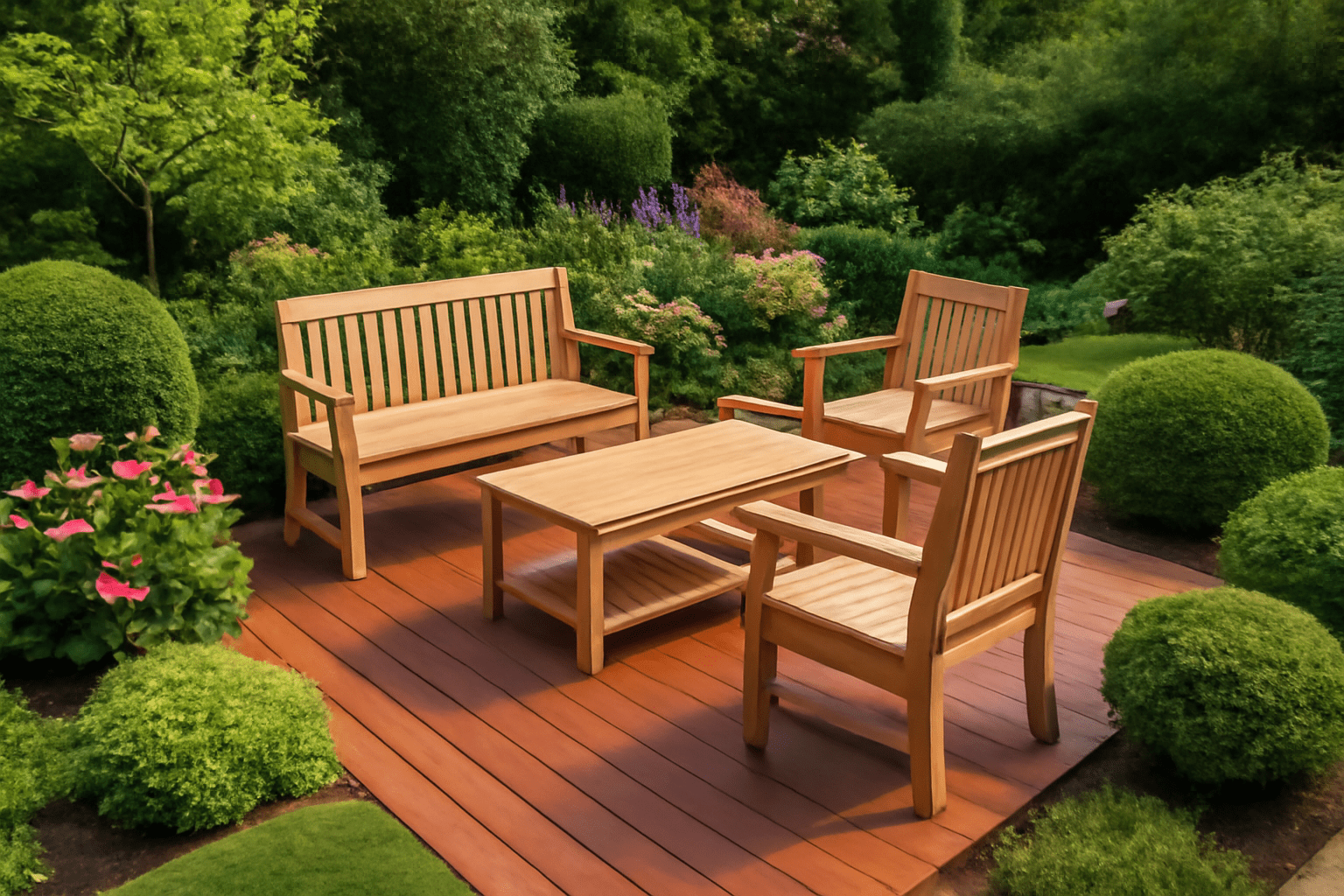
Whether you prioritize longevity, budget, maintenance, or aesthetics, understanding the strengths of each wood will help you make an informed decision. Keep in mind that both redwood and cedar require proper care to maintain their beauty and performance over time.
Now that you know the key differences, it’s time to choose the wood that best suits your project. Happy building, and don’t hesitate to share your experiences or ask any questions in the comments below!
Frequently Asked Questions(FAQ)
Which is more durable, redwood or cedar?
Redwood is generally more durable and long-lasting, especially for outdoor projects like decking and fencing. It’s highly resistant to decay, insects, and rot. Cedar is also durable but tends to wear out faster than redwood, particularly in harsh weather conditions.
Is redwood more expensive than cedar?
Yes, redwood is typically more expensive due to its durability, rich color, and limited availability. Cedar, on the other hand, is more affordable and often used in budget-friendly outdoor projects, making it a popular choice for homeowners looking to save on costs.
How long does redwood last compared to cedar?
Redwood can last up to 30 years or more with proper care, especially in outdoor conditions. Cedar lasts around 10-20 years, depending on maintenance and exposure to the elements. Redwood is a better choice for long-term investments in outdoor structures.
Can I use cedar for outdoor furniture?
Yes, cedar is a great option for outdoor furniture due to its natural resistance to decay and insects. However, it requires more regular maintenance compared to redwood, including sealing and occasional staining, to retain its look and durability.
Does redwood need more maintenance than cedar?
Redwood requires less maintenance compared to cedar. While both woods benefit from periodic sealing to protect them from the elements, redwood naturally resists decay better, meaning it requires less frequent attention. Cedar, however, needs regular care to maintain its appearance and prevent weathering.
Is redwood or cedar better for decking?
For high-end, long-lasting decking, redwood is often the better choice due to its superior durability and resistance to weather and insects. However, cedar can still be a good option for those on a budget or for smaller projects, though it may need more frequent upkeep.
.
What is the difference in appearance between redwood and cedar?
Redwood has a rich reddish-brown color with a fine, straight grain, making it ideal for aesthetic-focused projects. Cedar is lighter, with hues ranging from pale yellow to reddish-brown, and it often features a more subtle, irregular grain pattern.
Which wood is better for outdoor projects in wet climates, redwood or cedar?
Redwood is better for wet climates due to its higher resistance to moisture, decay, and insects. Cedar can still handle moisture but is more likely to wear down in consistently wet conditions, requiring more maintenance to prevent rot and damage.










